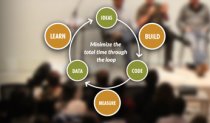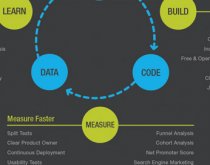Lean Startup success stories
 “Startup success can be engineered by following the process, which means it can be learned, which means it can be taught.”- Eric Ries
“Startup success can be engineered by following the process, which means it can be learned, which means it can be taught.”- Eric Ries
The Lean Startup provides a scientific approach to creating and managing startups and get a desired product to customers' hands faster. The Lean Startup method teaches you how to drive a startup-how to steer, when to turn, and when to persevere-and grow a business with maximum acceleration. It is a principled approach to new product development.
Too many startups begin with an idea for a product that they think people want. They then spend months, sometimes years, perfecting that product without ever showing the product, even in a very rudimentary form, to the prospective customer. When they fail to reach broad uptake from customers, it is often because they never spoke to prospective customers and determined whether or not the product was interesting. When customers ultimately communicate, through their indifference, that they don't care about the idea, the startup fails.
“The Lean Startup method teaches you how to drive a startup-how to steer, when to turn, and when to persevere-and grow a business with maximum acceleration.”
+ The Lean Startup Process - Diagram“Using the Lean Startup approach, companies can create order not chaos by providing tools to test a vision continuously.”
+ Continuous Innovation “By the time that product is ready to be distributed widely, it will already have established customers.”
“By the time that product is ready to be distributed widely, it will already have established customers.”
Eliminate Uncertainty
The lack of a tailored management process has led many a start-up or, as Ries terms them, "a human institution designed to create a new product or service under conditions of extreme uncertainty", to abandon all process. They take a "just do it" approach that avoids all forms of management. But this is not the only option. Using the Lean Startup approach, companies can create order not chaos by providing tools to test a vision continuously. Lean isn't simply about spending less money. Lean isn't just about failing fast, failing cheap. It is about putting a process, a methodology around the development of a product.
Work Smarter not Harder
The Lean Startup methodology has as a premise that every startup is a grand experiment that attempts to answer a question. The question is not "Can this product be built?" Instead, the questions are "Should this product be built?" and "Can we build a sustainable business around this set of products and services?" This experiment is more than just theoretical inquiry; it is a first product. If it is successful, it allows a manager to get started with his or her campaign: enlisting early adopters, adding employees to each further experiment or iteration, and eventually starting to build a product. By the time that product is ready to be distributed widely, it will already have established customers. It will have solved real problems and offer detailed specifications for what needs to be built.
Develop An MVP
+ Learn When It Is Time To PivotA core component of Lean Startup methodology is the build-measure-learn feedback loop. The first step is figuring out the problem that needs to be solved and then developing a minimum viable product (MVP) to begin the process of learning as quickly as possible. Once the MVP is established, a startup can work on tuning the engine. This will involve measurement and learning and must include actionable metrics that can demonstrate cause and effect question.
You might also like




Nortech Systems' (NSYS) CEO Rich Wasielewski on Q2 2014 Results - Earnings .. — Seeking Alpha
This expertise is especially valuable for development stage and start-up medical device companies. These companies are looking to us as manufacturing partners, so they can better focus on research and development and marketing of their products.

|
The Patron Way: From Fantasy to Fortune - Lessons on Taking Any Business From Idea to Iconic Brand Book (McGraw-Hill)
|



